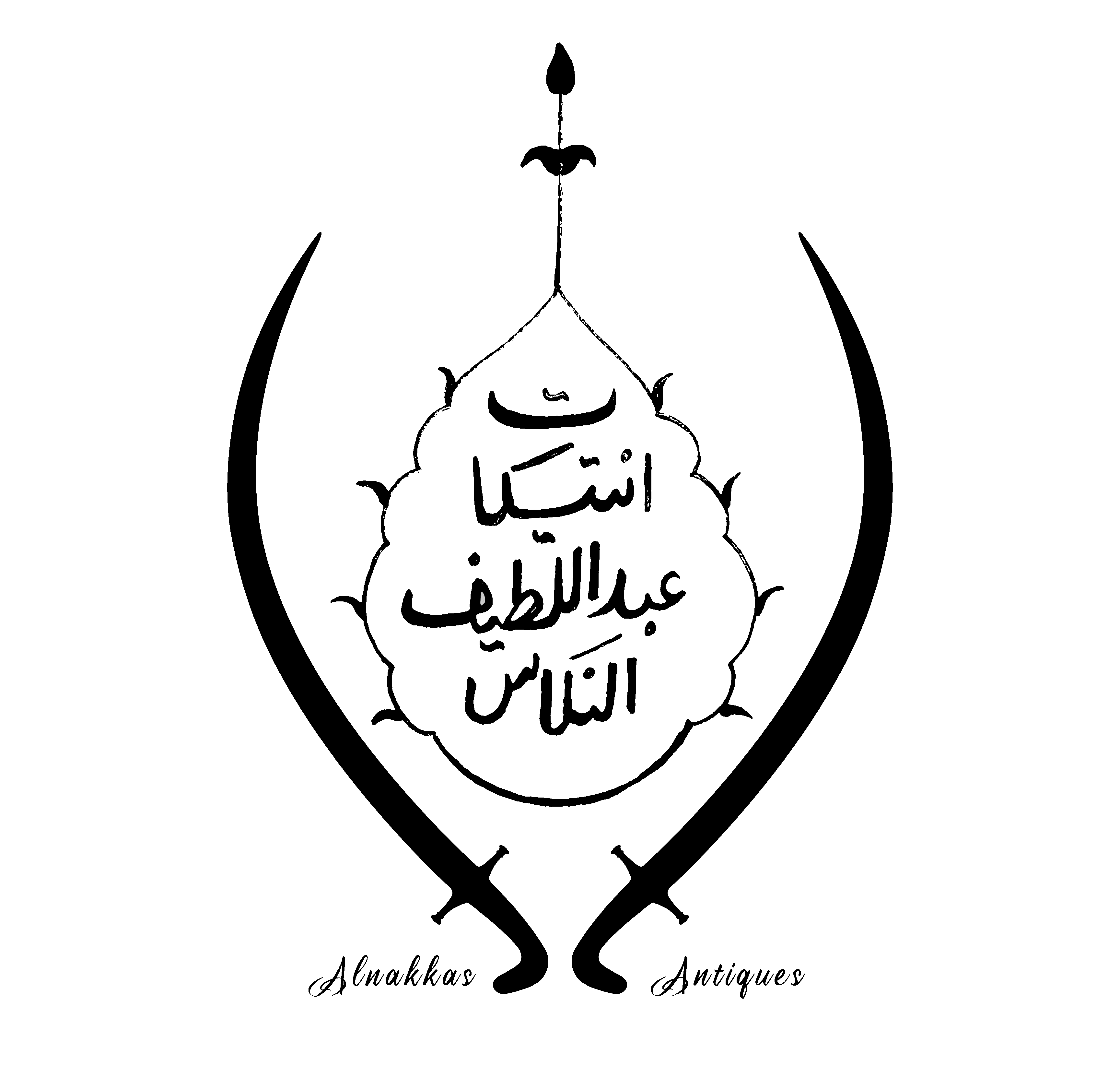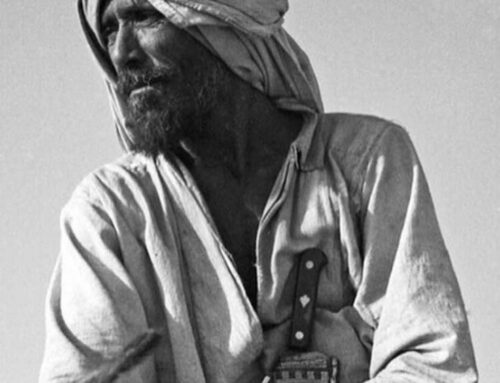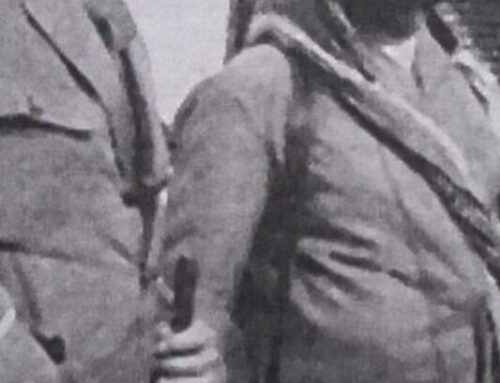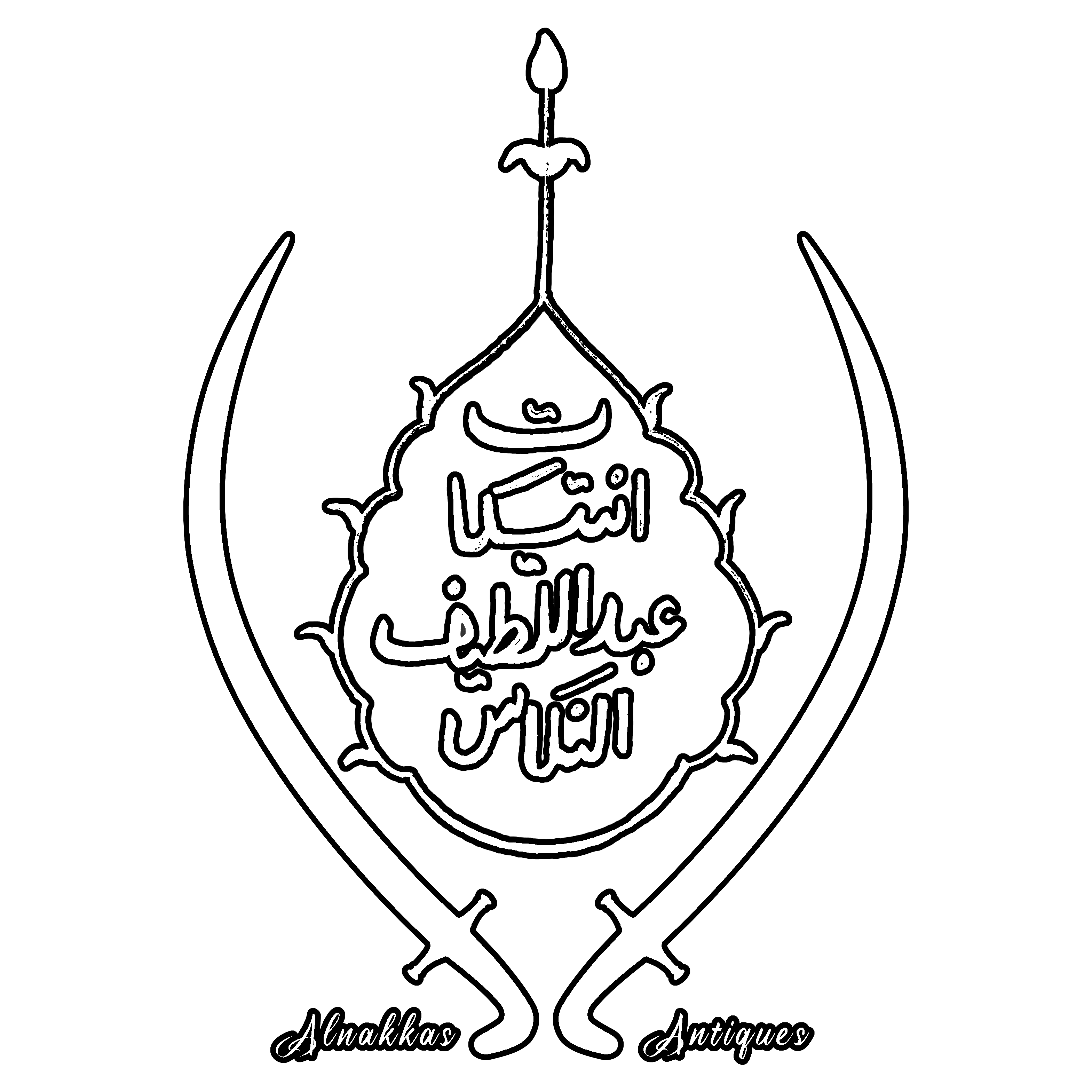Syrian swords often come with a variety of blades. Being for the large part reliant on the import of blades, it is not uncommon to find Syrian examples with Persian, Indian, Ottoman and European examples. When it comes to mounts, the Syrian sword maker would often focus on maintaining a relative theme to their craft, even if many times they’d employ older fittings, or even older handles while creating newer parts such full scabbards or sometimes simply chapes, lockets and quillons. Their most distinct feature though, is the horn handles inlaid with various metals and inserts made in multiple shapes such as stars and circles in varying patterns.
In those two examples, the scabbards are likely made in the same workshops using the well known iron fittings with silver koftgari. The hilts are likely older in both examples, with no.1 maintaining brass mounts of different craftsmanship than the usual style produced by Damascus workshops and both its quillons and carrying rings are made of wootz. No.2 maintains old silver parts with a likely newer pommel and quillon with a scabbard fully made by Syrian Damascus workshops.
The bigger difference lies in the blades which on a superficial examination appear to have very similar designs. The first sword although looks to follow the design of European sabre blades such as the 1796 Light cavalry blade and other blades it influenced made in Germany or Austria but it is made of wootz, likely of Persian manufacture. Handling it also gives further information due to its weightiness and relatively poor balancing in comparison to the general good balance of European blades. In comparison to no.2, which appears to be with a European blade, no.2 is lighter, even though both do not have a drastic difference in dimensions (No.1 being 83 cm long and no.2 being 81 cm) This is likely due to the distal taper which appears thicker towards the edge in example no.1, but both are almost identical in taper when it comes to the spine area. Another difference between them is that no.1 maintains its width through out its length while no.2 becomes wider towards the tip, in design very similar to the 1796 LC and that likely further evidence of its European origin.
Although this in a general view is merely minor differences, it tells a rich history of blade circulation and the adoption of various products from all over the world, where they end as Syrian swords that eventually as well, spread through Arabia used by customers of different backgrounds.






